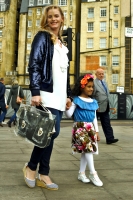 |
| Tereza Brantlova & Sataysia Bola |
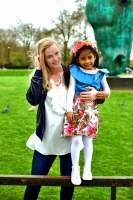 |
| Tereza Brantlova & Sataysia Bola |
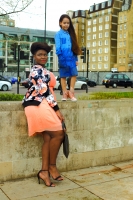 |
| Tinaresse Dandajena & Mia Keysell |
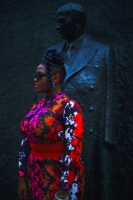 |
| Tinaresse Dandajena |
Models of Diversity recently invited me along to Marble Arch, London for a photo shoot directed by renowned fashion photographer Oliver Morris. This outdoor, commercial shoot was with Lovedrobe, a UK based plus-size fashion brand, which take trends from the catwalk and turns them into wearable pieces for women.
Lovedrobe celebrate individuality and their collections are designed to fit any figure beautifully and comfortably. Their garments are filled with bold and bright colours and prints, embracing the female form – every female form. It is no wonder celebrity stylist and fashion designer Michelle Navarro enjoyed styling the models for the shoot:
“I feel like I was looking in a real high street shop when I saw their pieces. Lovedrobe aren't about covering up your body and they incorporate prints and patterns in a way that works unlike a lot of plus size stores. They definitely prove fashion is for anyone and everyone!”
Michelle has been working with Angel Sinclair, CEO of Models of Diversity (MOD) for a few years but has been submerged in fashion since she was a child. Her own brand is FIFY (Fashion Is For You), and she creates a variety of bespoke pieces for everyone and anyone, regardless of their size. Diversity is important to her and Lovedrobe, as well as MOD, embrace diversity reinforcing that there is no set standard on fashion and beauty. Michelle worked with the models individually, and I got to speak to them about the plus-size fashion industry.
Tina, a Miss Curvaceous runner-up who has been modelling for about 2 years pointed out the lack of change towards different sizes. There aren't many opportunities for plus-size models, and fewer for non-Caucasians, but Tina said she's seen improvements:
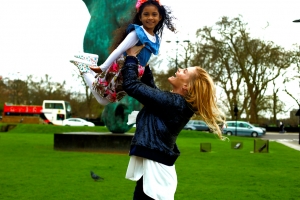 |
| Tereza Brantlova & Sataysia Bola |
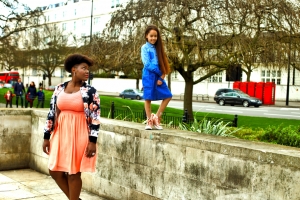 |
| Tinaresse Dandajena & Mia Keysell |
“The UK is getting better, MOD is a big game changer in that respect, but it's more than modelling. It's about women finding beauty and confidence in themselves and modelling gives me that sense of purpose.”
A lot of models that are plus-size love the way they look and want to help change the perception that plus-size models are different or not as good as non-plus-size models. There is a strong sense of responsibility that all the models felt about what they do and what they represent: body positivity and acceptance for everyone. Ira, a German model who has appeared in various campaigns and runways for brands including Esprit and C&A, said size is nothing:
“Every size is beautiful, it doesn't matter if you're able or disabled. It is not about the size or ability, it is about the personality and that makes a model”
This is something that Models of Diversity is all about – all types of models representing all types of people. But the fashion industry is not moving as rapidly or positively as it should. Terry, a professional basket ball player turned model signed with Bridge models in the UK mentioned that the term ‘plus-size’ has some negative connotations. But she wants to help change that by proving that there is nothing negative about your body:
“I feel like a model because I am a model, a regular model like other models. I want to be an example for women and young girls because we should accept ourselves as all of us are beautiful”.
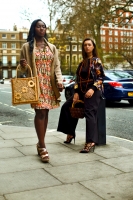 |
| Ira Getman & Marion Fagbemi |
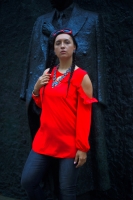 |
| Ira Getman |
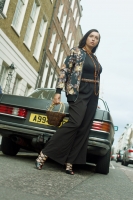 |
| Ira Getman |
Being a role model and remaining confident is difficult at times. Models represent people in fashion, and a plus-size person implies bigger than ‘regular’ sized people, which is just an absurd claim: there shouldn't be a set standard for what is regular. Marion, a professional dancer, began modelling very recently after being discovered in a music video. Her excitement about her first shoot was clear, but she also talked about how alienating the industry has been because of labels:
“MOD includes everyone, which makes it so much more positive, but a lot of us can feel like we aren't good enough or ‘real’ models because we're not called models, we're called plus-size models.”
The plus-size fashion industry has been growing slowly, with more brands welcoming more sizes for all body types, but the representation of plus-sizes is still scarce. And the term itself can be construed in a negative way. Models of Diversity is fighting to change that in the UK by representing a range of models including plus-sizes, disabled men and women, and ethnic minorities. Even the range of child models is not diverse, and the two beautiful girls who were part of the shoot were both scouted by Angel for MOD and showcased Childsplay Clothing.
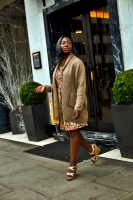 |
| Marion Fagbemi |
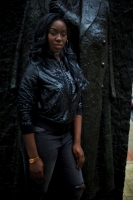 |
| Marion Fagbemi |
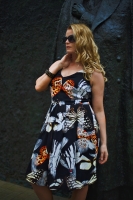 |
| Tereza Brantlova |
But what is a model supposed to look like? Should a model look like a specific person? The term plus-size includes sizes 10 and up, which sometimes makes no sense because those aren't irregular sizes, or at least shouldn't be considered unusual or ‘plus’ in comparison to “straight” sizes. According to Oliver, “to be a good model, you've got to be the best actress and an amazing seller.”
And really, there shouldn't be anything else to it.
 |
| Tereza Brantlova, Tinaresse Dandajena, Ira Getman & Marion Fagbemi |
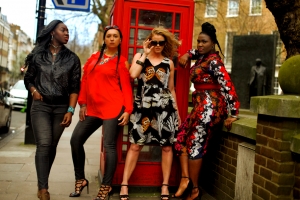 |
| Tereza Brantlova, Tinaresse Dandajena, Ira Getman & Marion Fagbemi |
 |
| Tereza Brantlova, Tinaresse Dandajena, Ira Getman & Marion Fagbemi |